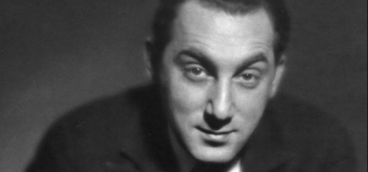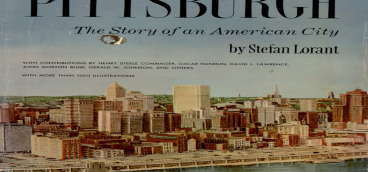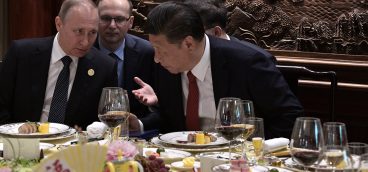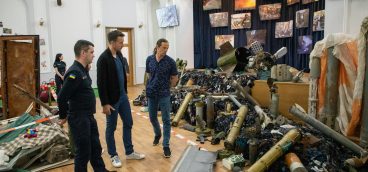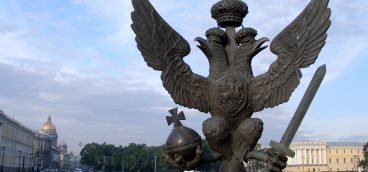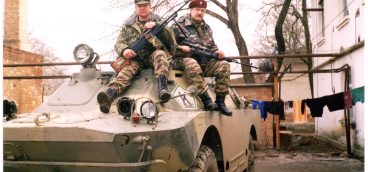Of Crypts and Art Thieves
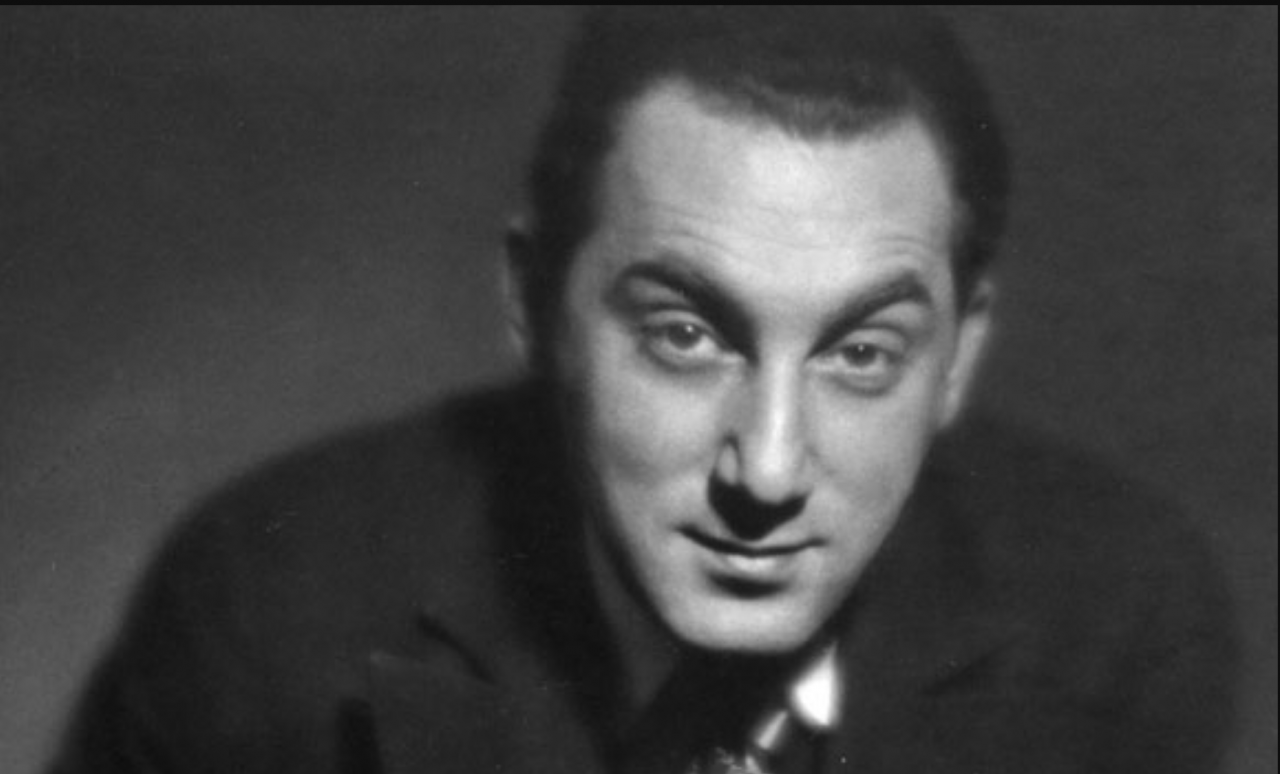
My next story about Lorant is a short one, but memorable, at least to my wife and me. We’ll call it:
Tale from the Crypt
Previously in this series: Stefan Lorant Part IV, Read All Over the World
My wife, Simin, is half-Czech, and Stefan seemed to be deeply infatuated with her. Or maybe he was deeply infatuated with every woman.
Simin’s Czech grandfather, Albert, emigrated to America as a young man with his wife, but even though he had lived in the U.S. for decades, he still sported a very deep Eastern European accent, sounding a bit like Henry Kissinger with a bad cold.
Albert died just after Simin and I met, so I never knew him. But for years before he died he would call Simin and, since he was mostly deaf, he would shout into the phone, with his deep voice and deep accent, “Seemeen! How are you, my dear!”
One day at home the phone in the kitchen rang and Simin answered it. A deep voice with a deep Eastern European accent boomed, “Seemeen! How are you, my dear!”
She turned pale and was unable to speak, while in the background Stefan shouted, “Hello? Hello? Are you there?”
I took the phone from my wife’s hand and said to Stefan, “It’s okay, Stefan, Simin thought you were calling from beyond the grave.”
The Taj Mahal
As I mentioned earlier, since Pittsburgh foundations and individual philanthropists had underwritten the first Pittsburgh book, the photographs used in the book became the property of the city of Pittsburgh and they were deposited with the Carnegie Library.
Unfortunately, the library didn’t have a curator of photography and the rest of the staff seemed to consider the photos to be a nuisance. At some point over the years someone had dumped the (extremely valuable) photos in a random drawer and forgotten about them.
Almost three decades later, as work on the fifth edition of the Pittsburgh book was gearing up, we needed some of the photos from the original edition. Someone was sent out to the Carnegie Library to get them, but they were gone. The drawer where they’d been unceremoniously dumped was empty and a thorough search of the library came up dry.
Someone had obviously taken the photos and suspicion immediately turned toward Stefan Lorant. When we called Stefan about it he denied vociferously that he had the photos, but he also railed against Pittsburgh’s irresponsibility in not securing the photos and in leaving them exposed to destructive variations in temperature and humidity. Whoever had taken the photos, Lorant declared, wasn’t a thief but “someone who had performed a public service!”
We all knew Stefan was lying about not having taken the photos, but we also knew he was right about the city’s irresponsible handling of them. I had numerous calls with Stefan about returning the photos, and he always responded that “whoever” took the photos certainly wouldn’t return them until “he or she” could be sure they would be well cared-for.
On one of these calls, Lorant had upped the ante by dangling the possibility that his valuable collection of old German photographs might be donated to Pittsburgh. If the “person” who took the Pittsburgh photos would agree to return them, those two sets could form the core of a photographic collection the city could be proud of. That collection might grow handsomely over time because, whatever else it is, Pittsburgh is one of the world’s most photogenic cities.
Lorant pointed out that one of the photographers who worked on the Pittsburgh book, W. Eugene Smith, had left his personal collection to the Center for Creative Photography in Arizona – founded by Ansel Adams – which might be used as a model for the Pittsburgh archive.
During one of my calls with Stefan, Lorant told me, tearfully, that his beloved son, Mark, had died in an automobile accident in 1984. Suppose, we thought later, that we were to create a state-of-the-art photographic archive in Pittsburgh – attractive, secure, temperature- and humidity-controlled, and so on. It would be based at the Carnegie Library and might even boast a part-time curator of photography. We could name the archive after Mark Lorant. Might that not tempt Stefan to admit he’d taken the Pittsburgh book photos, return them, and also donate the old German photos?
On yet another call with Stefan I delicately mentioned this idea and Stefan could not have been more enthusiastic. Should Pittsburgh move forward with the archive project, Lorant was sure that the “individual” who took the Pittsburgh book photos would return them. Then, assuming that the city and Lorant could agree on a valuation for the German photos, he might donate those to the new archive as well.
I told Stefan that I would promptly begin to look into the feasibility of the archive project, but he was having none of it. “Pittsburgh,” he announced, “wouldn’t know a good photo archive if it was bit in the ass by one!” He, Stefan Lorant, would give the matter some thought and get back to me with some ideas.
Some time later a very large package arrived in my office. Inside it was a cover letter from Lorant announcing that he had designed the “Mark Lorant Museum of Photography.” The enclosed architectural drawings showed a free-standing building, a huge “crystal palace” that Lorant envisioned would stand on the grounds of the University of Pittsburgh, between the Carnegie Library and the Cathedral of Learning.
I was stunned. Was Lorant nuts? I called him and the conversation soon deteriorated into a shouting match. “Are you crazy, Stefan?” I shouted. “Do you have any idea what such a building would cost?”
I heard a loud gasp on the other end of the line, followed by stuttering: “C…c…c… cost? Cost? Did you say cost? Who the hell cares what it costs, we’re talking about art!”
We were back to square one.
Next up: Stefan Lorant, Part 6


